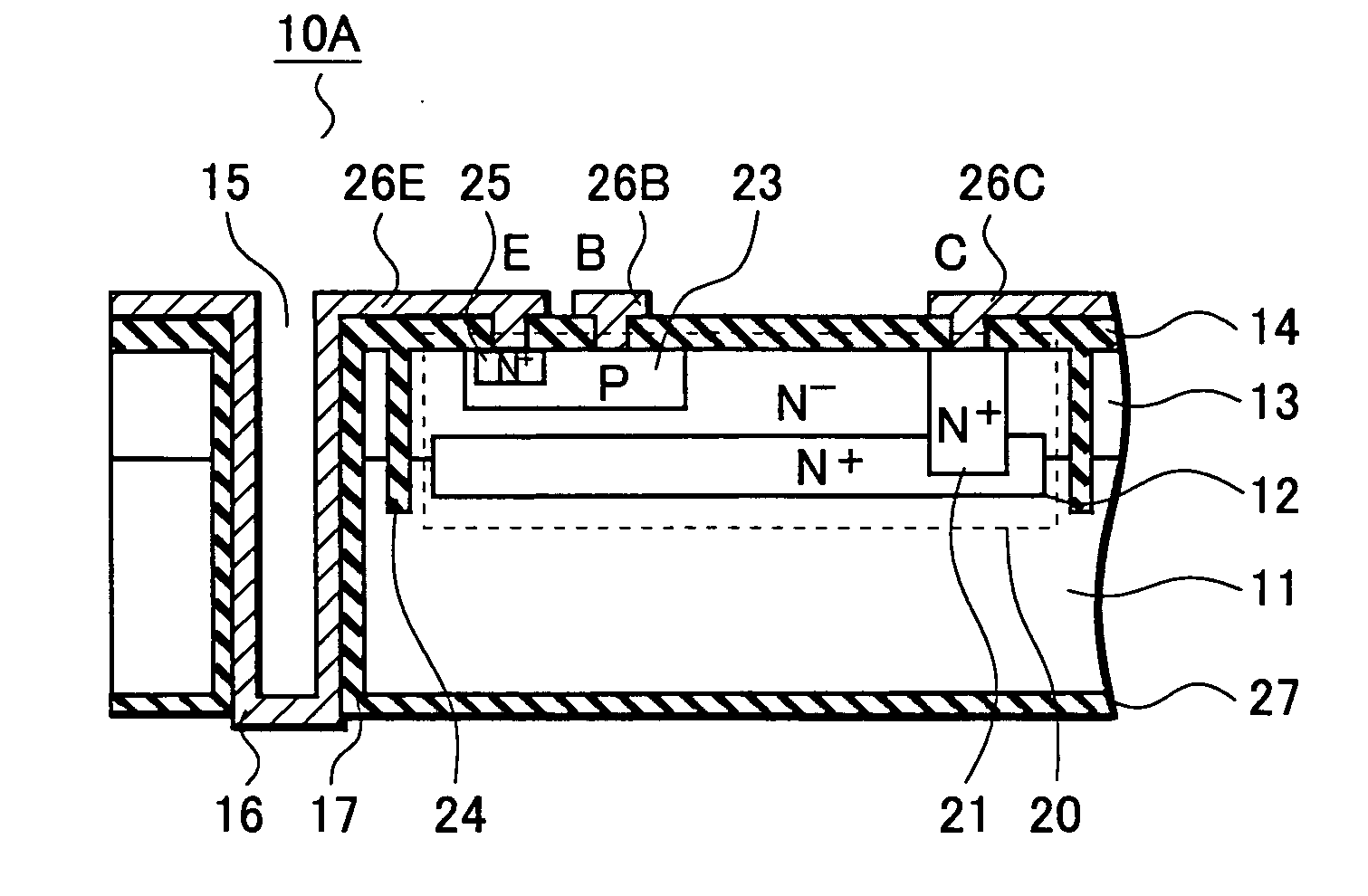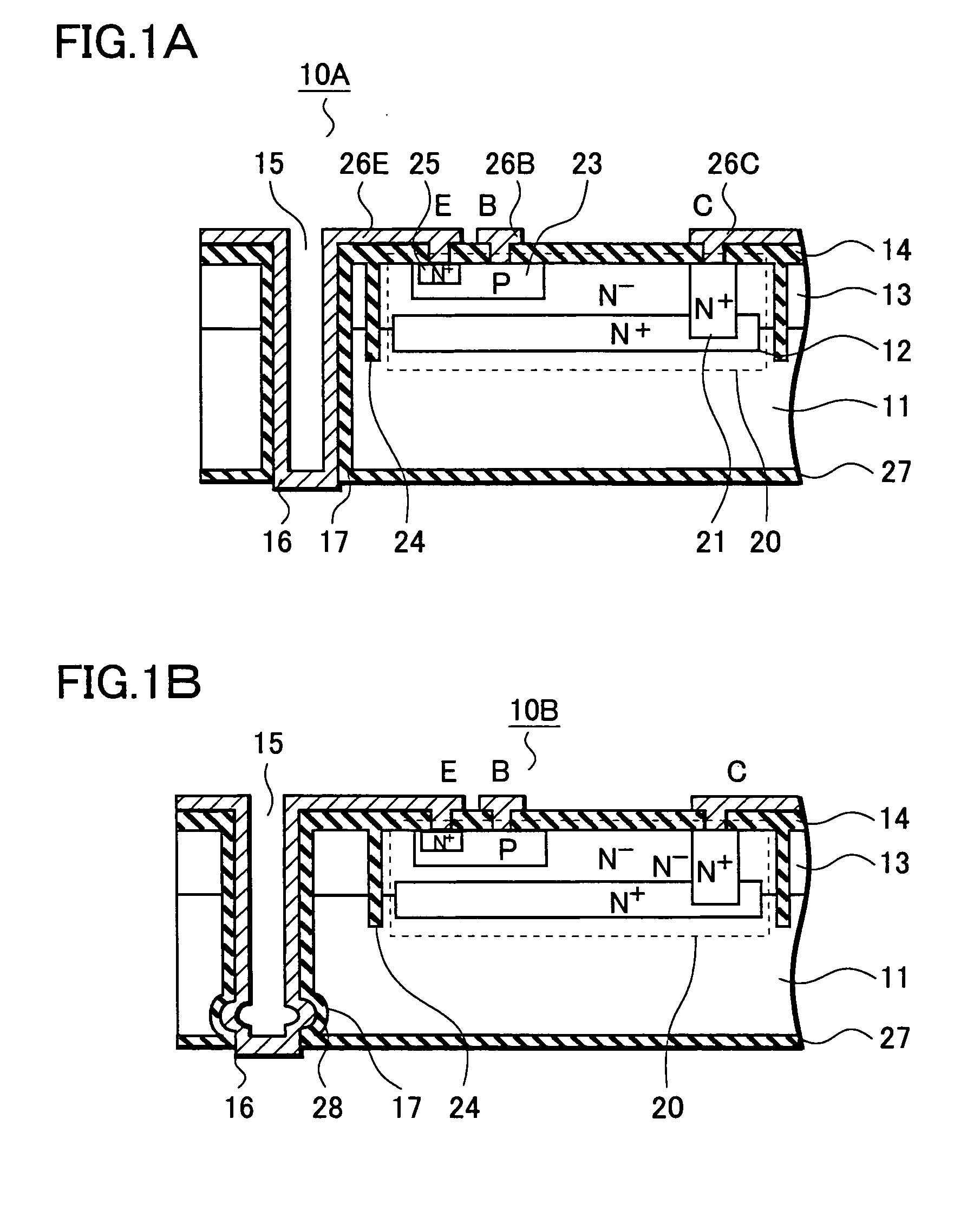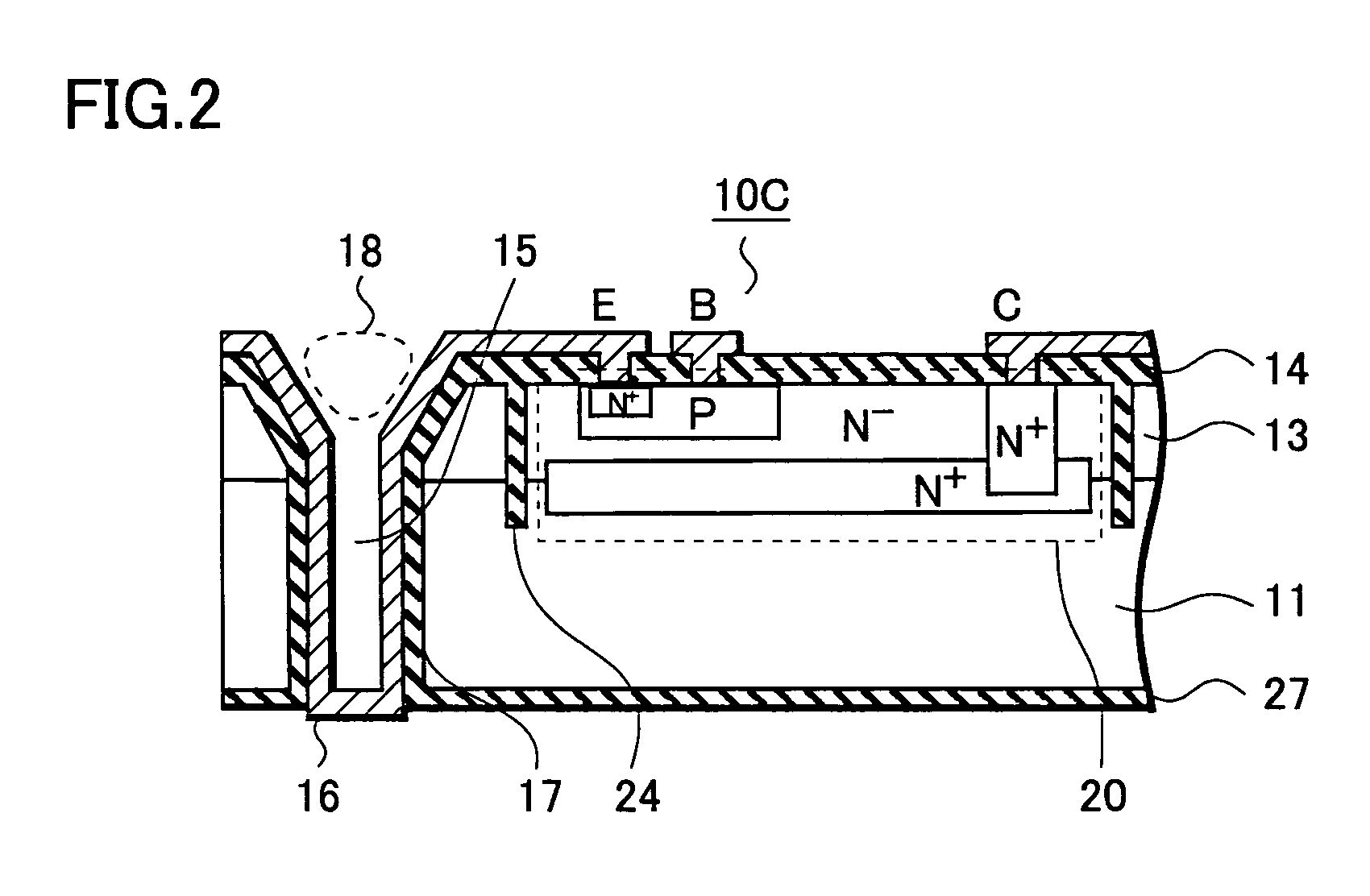Semiconductor device, method of manufacturing the same, circuit board, and method of manufacturing the same
- Summary
- Abstract
- Description
- Claims
- Application Information
AI Technical Summary
Benefits of technology
Problems solved by technology
Method used
Image
Examples
first embodiment
[First Embodiment]
[0027] By referring to FIGS. 1A to 3, a configuration of a semiconductor device of a first embodiment will be described.
[0028] As illustrated in a cross sectional view of FIG. 1A, in a semiconductor device 10A of this embodiment includes, an active region 20 is formed in an upper surface (first main surface) of a semiconductor substrate 11, and is surrounded by a trench 24 filled with an oxide. A through-hole electrode 16 electrically connected to the active region 20 extends from the upper surface of the semiconductor substrate 11 to a lower surface (second main surface) of the semiconductor substrate 11. A bottom end of the through-hole electrode 16 downwardly juts out of an insulating film 27 covering the lower surface of the semiconductor substrate 11.
[0029] Generally, the active region 20 is a region where an active element such as a transistor or a diode is formed. In this embodiment, a bipolar transistor is formed in the active region 20. A MOSFET, an IC, ...
second embodiment
[Second Embodiment]
[0050] In a second embodiment, by referring to FIGS. 4A to 5B, descriptions will be provided for a method of manufacturing the semiconductor device 10A illustrated in FIG. 1A.
[0051] By referring to FIG. 4A, first, an active region 20 including a bipolar transistor is formed in an upper surface of a p type semiconductor substrate 11 having a thickness of approximately 600 μm.
[0052] A method of manufacturing the active region 20 is as follows. First, an n+ type buried layer 12 is provided in the upper surface of the semiconductor substrate 11 by ion implantation. Subsequently, an n− epitaxial layer 13 is formed on the upper surface of the semiconductor substrate 11. The epitaxial layer 13 has a thickness of approximately 1.5 μm. Thereafter, a collector contact region 21, a base region 23 and an emitter region 29 are formed by ion implantation. The collector contact region 21 is formed to reach the buried layer 12 by adopting phosphorus ions (P) as an ion species u...
third embodiment
[Third Embodiment]
[0068] In a third embodiment, by referring to FIGS. 6A to 6D, descriptions will be provided for a method of manufacturing the semiconductor device 10B having a structure shown in FIG. 1B. The manufacturing method of this embodiment is basically similar to that of the second embodiment described above, and it is a different point that a concave portion 28 is provided to each through hole. Hereinafter, the manufacturing method will be described, focusing on this point.
[0069] By referring to FIG. 6A, an active region 20 is provided in a surface of a semiconductor substrate 11, and then, through holes 15 are formed to pass through a group including the semiconductor substrate 11 and layers stacked on the semiconductor substrate 11. In this embodiment, the concave portion 28 is formed in a bottom end of each of the through holes 15, the bottom end being the lowermost portion of the semiconductor substrate 11. In the bottom end of each of the through holes 15, the conca...
PUM
 Login to View More
Login to View More Abstract
Description
Claims
Application Information
 Login to View More
Login to View More - R&D
- Intellectual Property
- Life Sciences
- Materials
- Tech Scout
- Unparalleled Data Quality
- Higher Quality Content
- 60% Fewer Hallucinations
Browse by: Latest US Patents, China's latest patents, Technical Efficacy Thesaurus, Application Domain, Technology Topic, Popular Technical Reports.
© 2025 PatSnap. All rights reserved.Legal|Privacy policy|Modern Slavery Act Transparency Statement|Sitemap|About US| Contact US: help@patsnap.com



